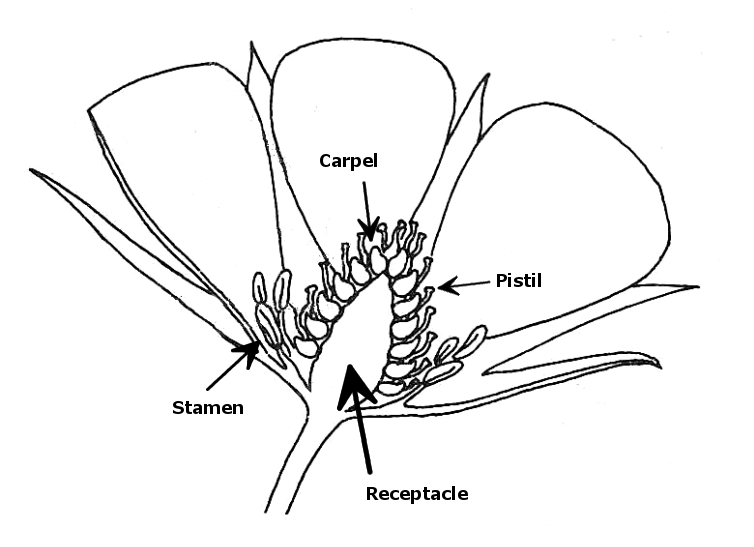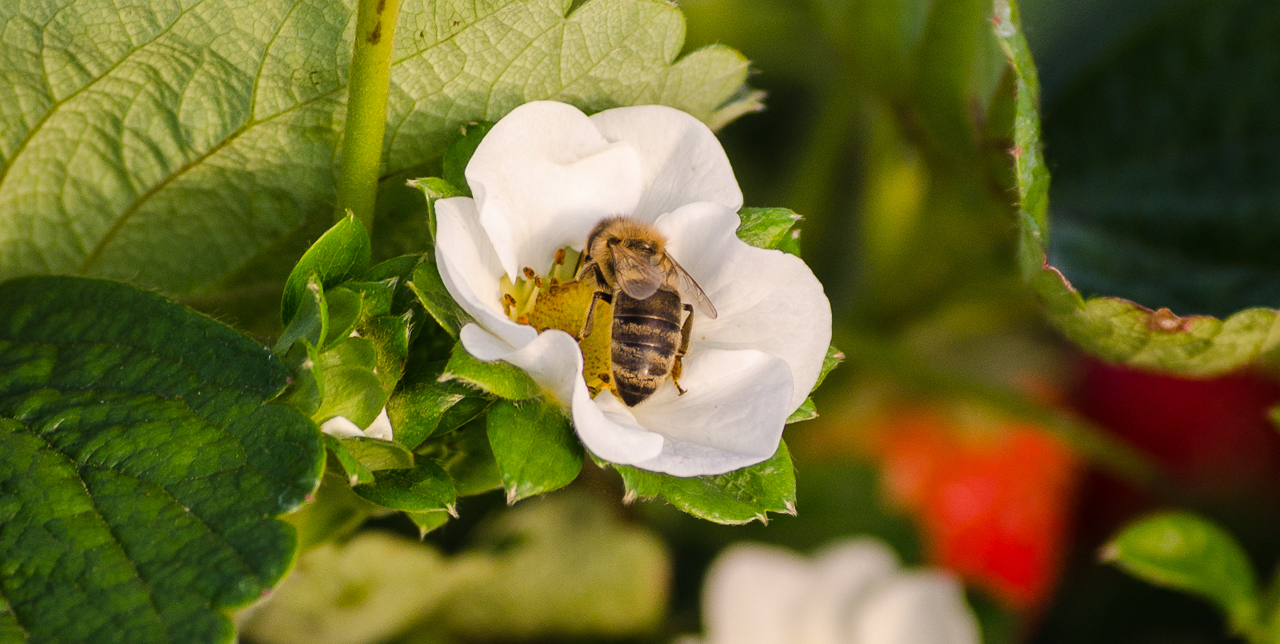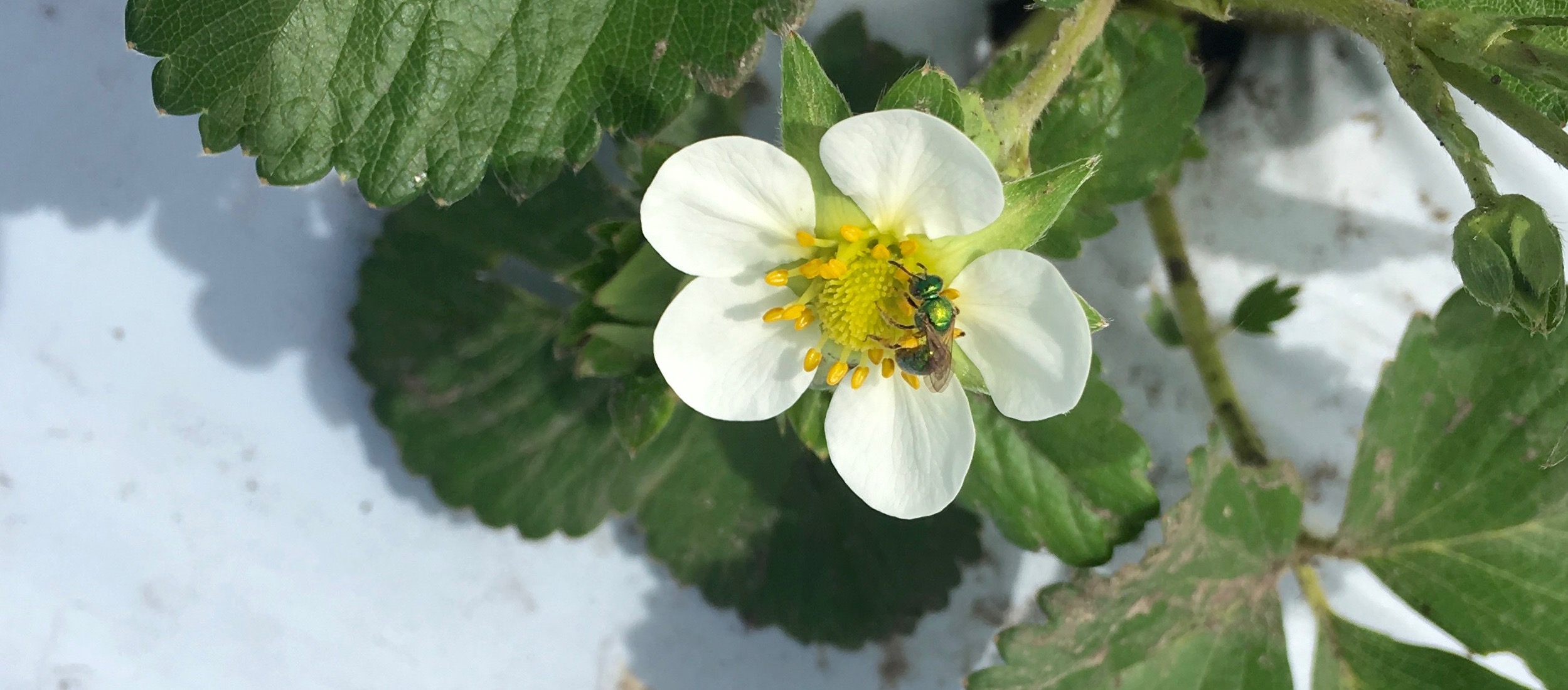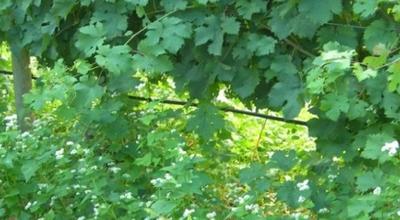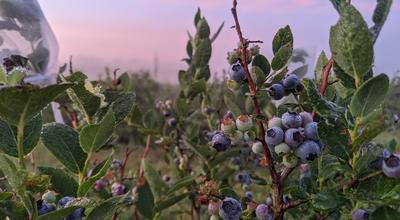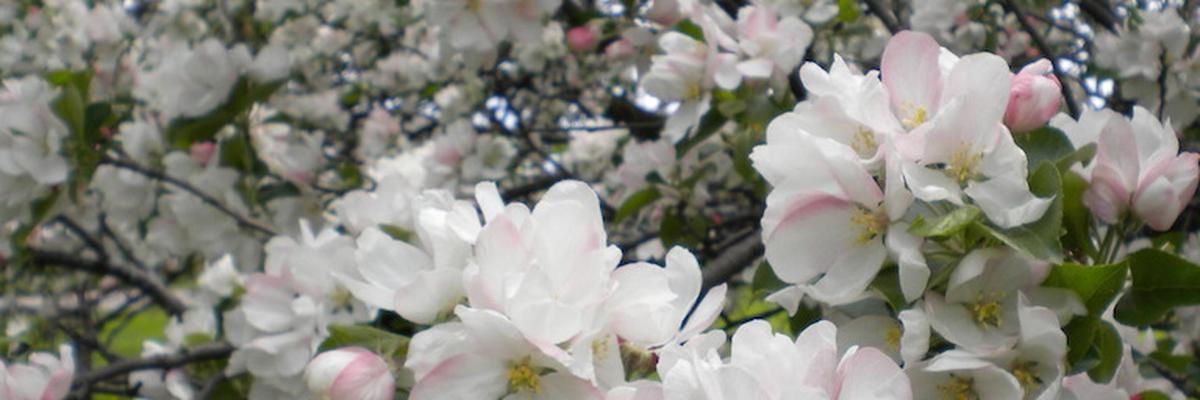
From a botanical perspective, flowers house the reproductive parts of a plant. After successful fertilization, a fruit develops to bear the seeds for the next generation. But getting the right pollen and egg to meet up, at the right time, in the right way, requires a bit of natural romancing. There are a lot of elements that need to fall in place before love blossoms and that bright flower turns into an apple, or a strawberry, or a raspberry! Have you ever wondered at how the miracle of how these fruits are born? It’s truly a story about the birds and, mostly, the bees.
In order to set fruit, the female parts of a flower need to be pollinated (that is, receive pollen) from the male parts of a flower. While some flowers are able to self-pollinate without the need for a different pollen source, most apples need cross-pollination to set fruits suitable for market. And that’s where bees come in! Pollinating animals like bees collect floral nectar and pollen for food and, in the process, end up transferring pollen from flower to flower as they forage. Not only do apple flowers need pollen from another apple flower, they generally need pollen from a flower of another apple variety. That’s why growers include trees called “pollinizers” in their orchards (a flowering crabapple is an example) so that there is a compatible source of pollen flowering at the same time as their main apple crop. In some cases, a branch of another variety can be grafted on to the tree of interest to maximize use of space! As you might expect, apple pollen tends to be pretty heavy, so large bee species like honey bees and bumblebees, as well as wild species like mason bees and orchard bees, are often the primary pollinators of apple blossoms.
Strawberries and raspberries have flowers that can self-pollinate, but their pattern for setting fruit means they benefit greatly from an insect visitor to help move pollen from the stamen (male) to the pistils (female). A strawberry develops after the pistils are pollinated, which then produce fertilized ovules or “achenes”. These achenes are the true fruit of the plant. Generally, the more achenes, the larger the strawberry. If you turn a strawberry leaves-side down, you can see how the middle of a strawberry flower enlarges to become the fruit we eat! When it comes to pollinators, recent research efforts, including at UMN, are indicating the importance of fly species (i.e. Syrphids) and native, wild bees for strawberry pollination. This is important for growers to keep in mind, so they can be sure that on-farm wild pollinators have the resources and habitat they require to continue supporting fruit production. Raspberries are similar to apples in that fruit development is improved when they receive pollen from other raspberry varieties. And the more fertilized ovules, the more drupelets that can bundle together to make a raspberry. Insect pollinators can help to ensure well pollinated flowers, leading to more fruitful raspberries! You may have noticed the results of poor pollination as crumbly raspberries that don’t stick together well.
Insect pollinators serve vital roles in the process of fruit production. But simple presence of bees is not always enough, since each crop has a different flowering personality, so to speak. Thankfully, knowing something about how flowers become fruit, growers can play matchmaker and help ensure they get the most bounty from their blossoms.
Images
- Diagram of strawberry flower, © D G Mackean
- Honeybee on strawberry flower, by Jijy Sooksa-Nguan
- A metallic green native sweat bee visits a strawberry flower, by Nathan Hecht
